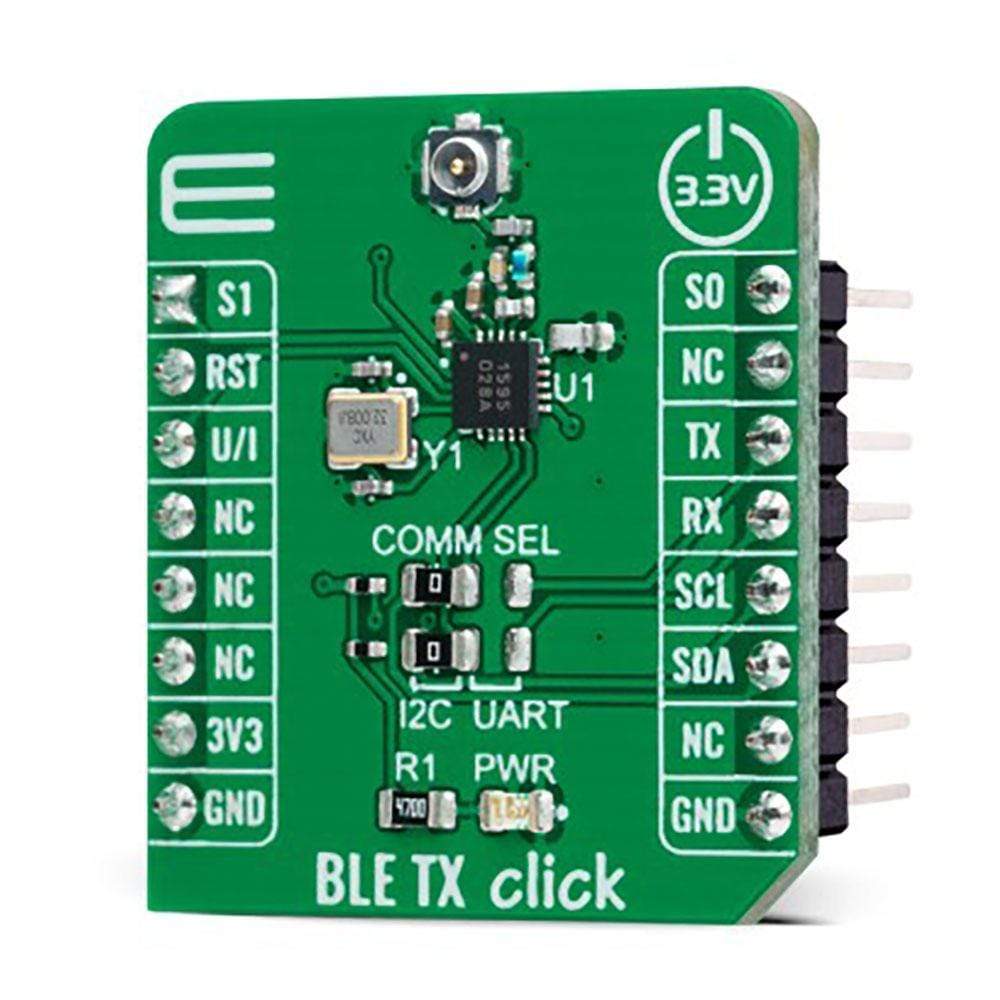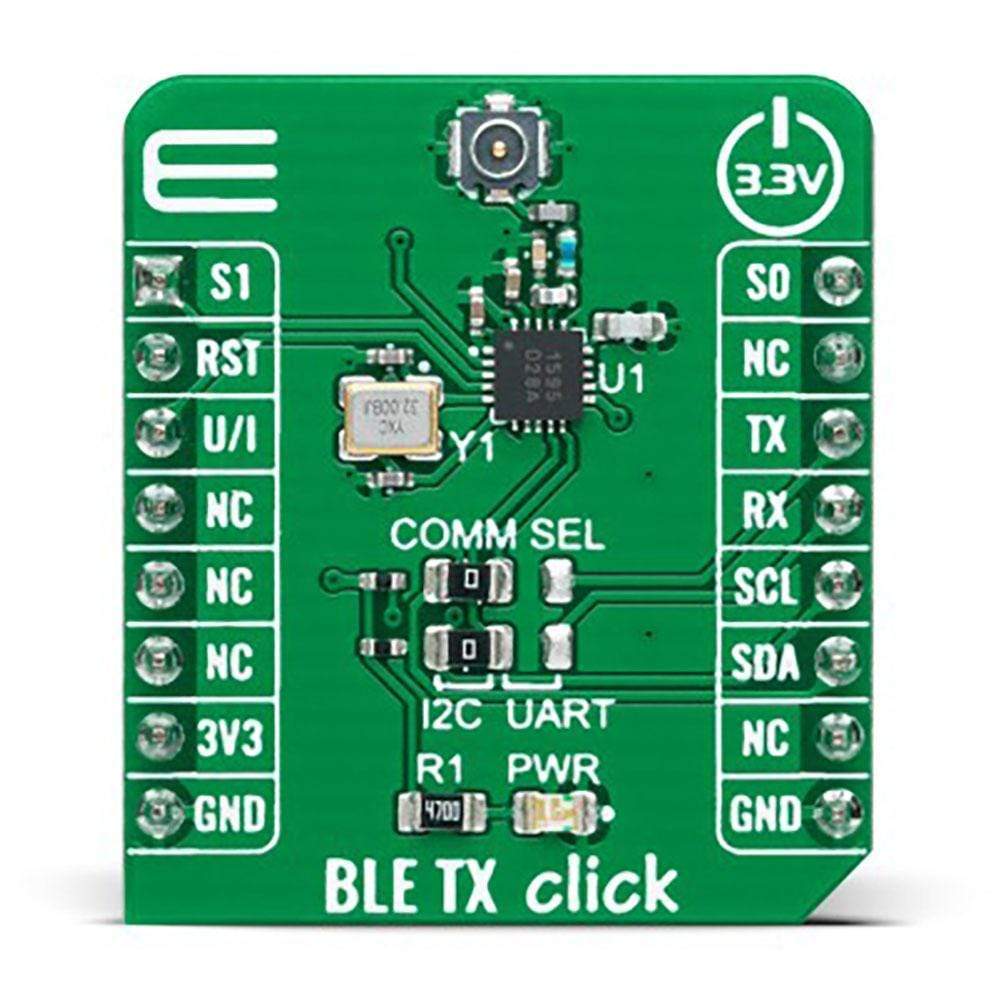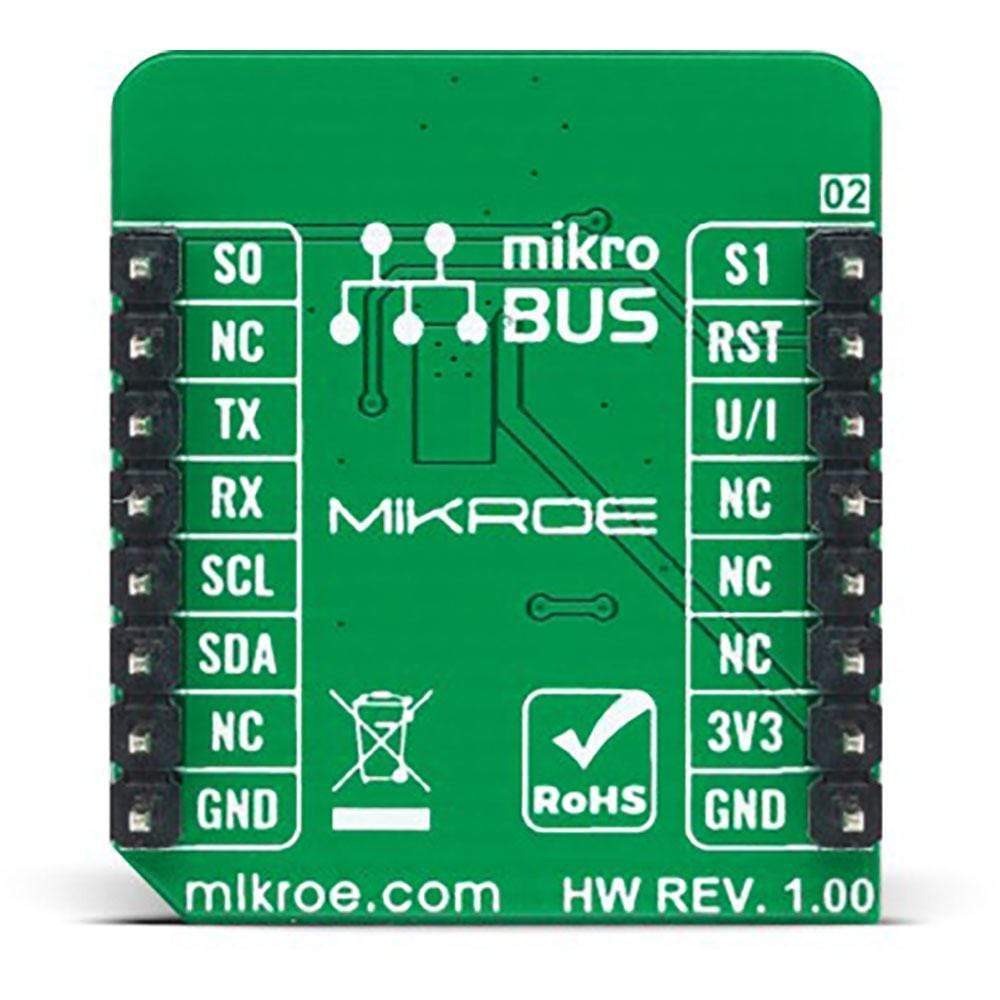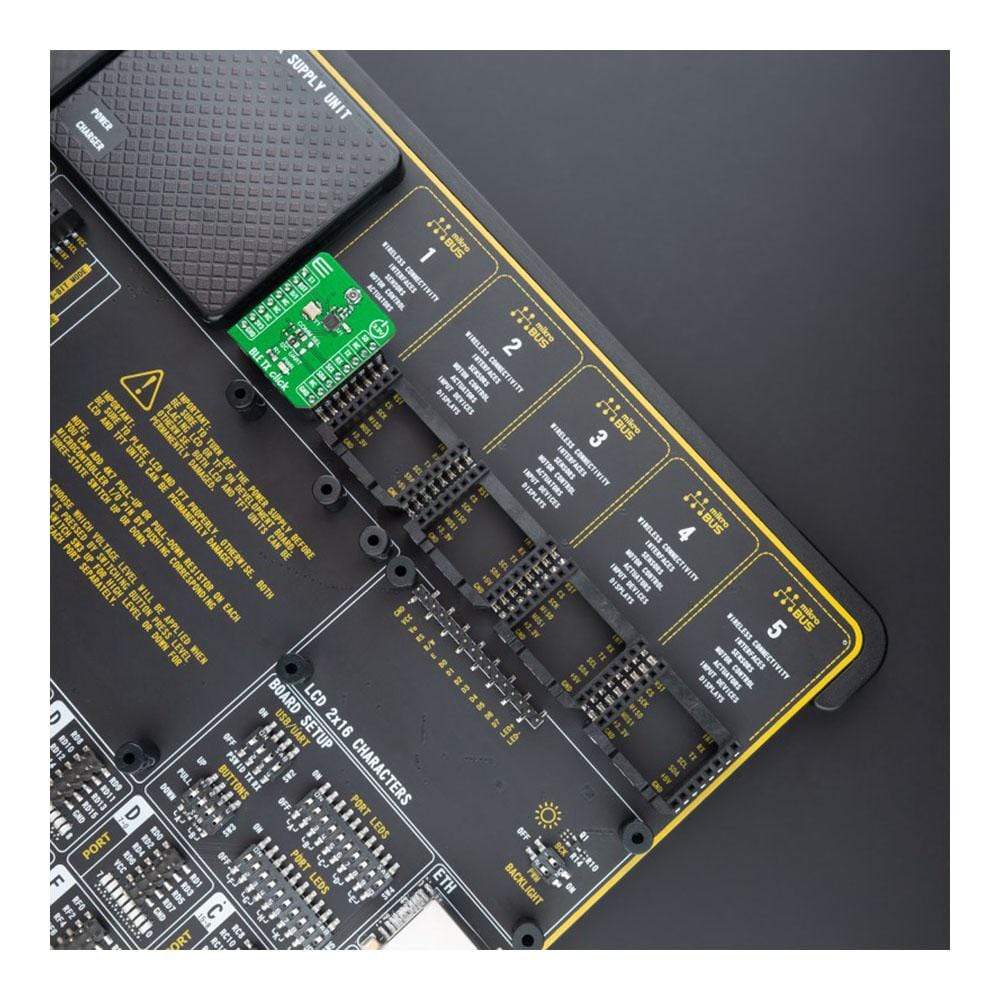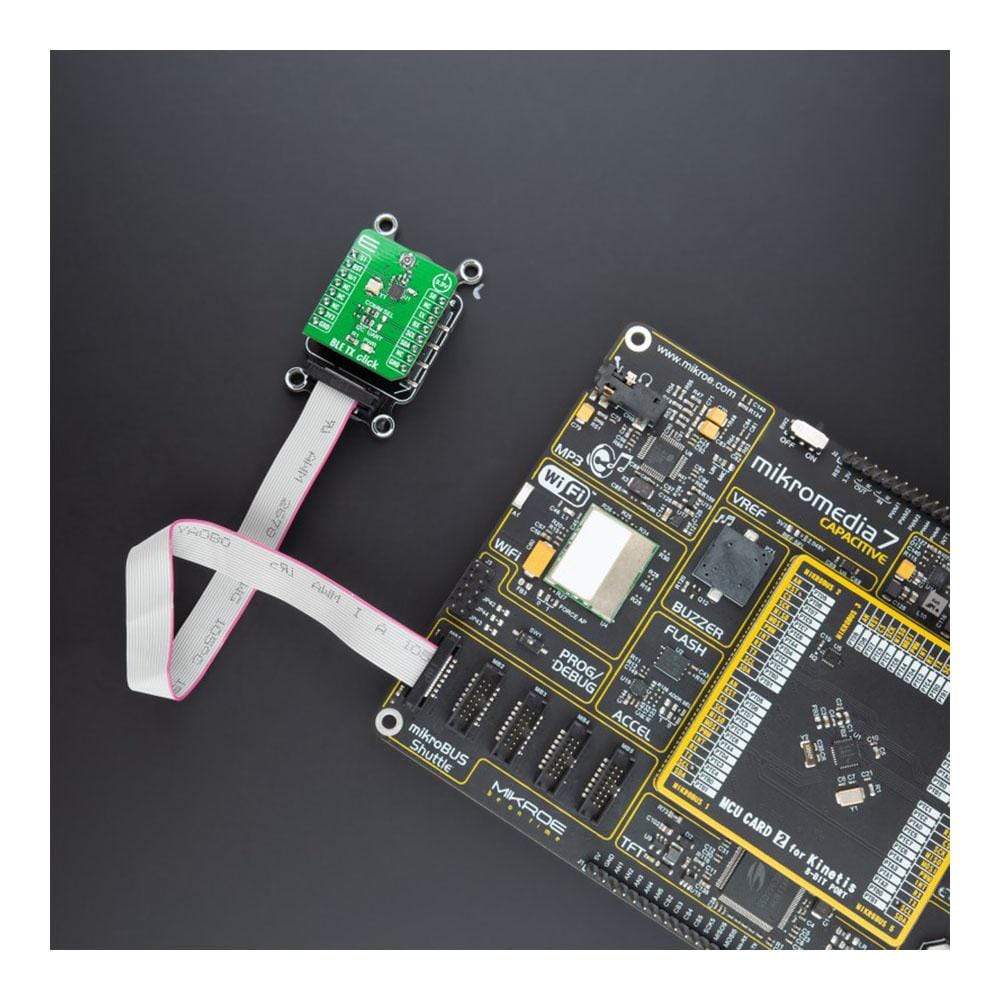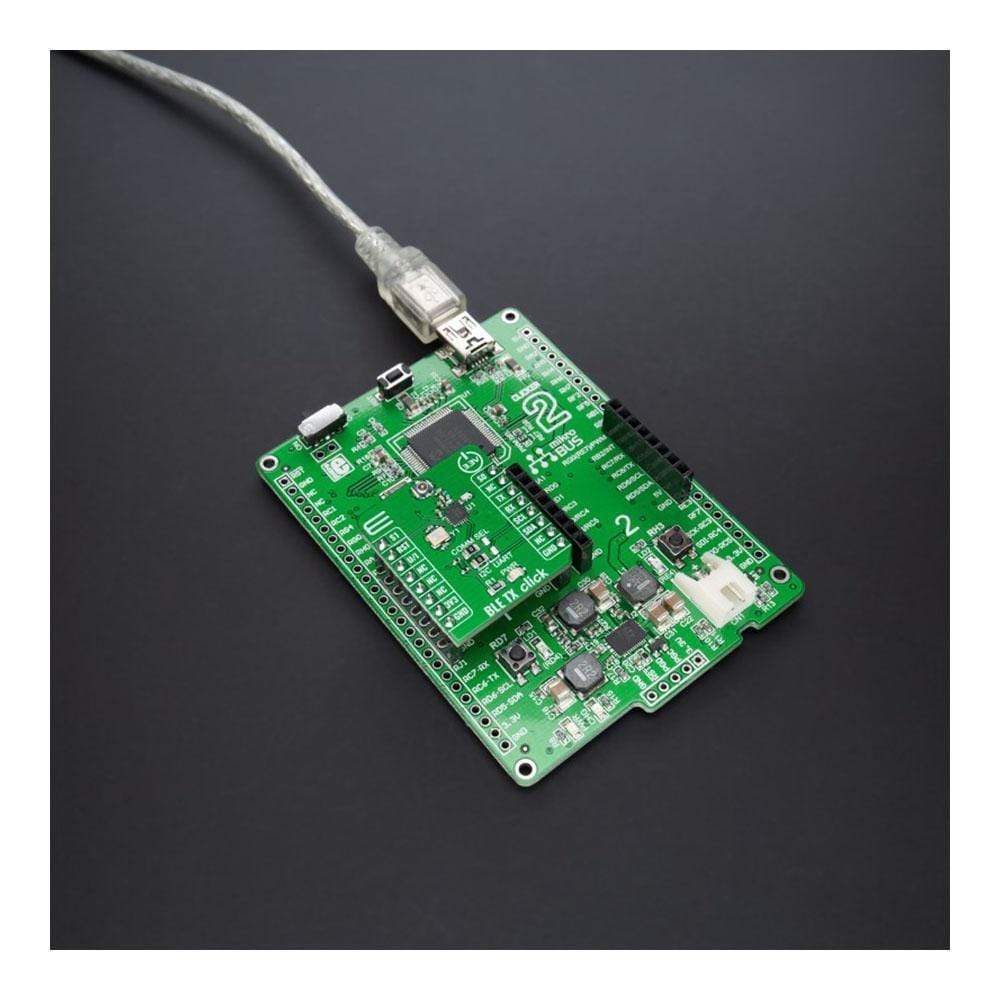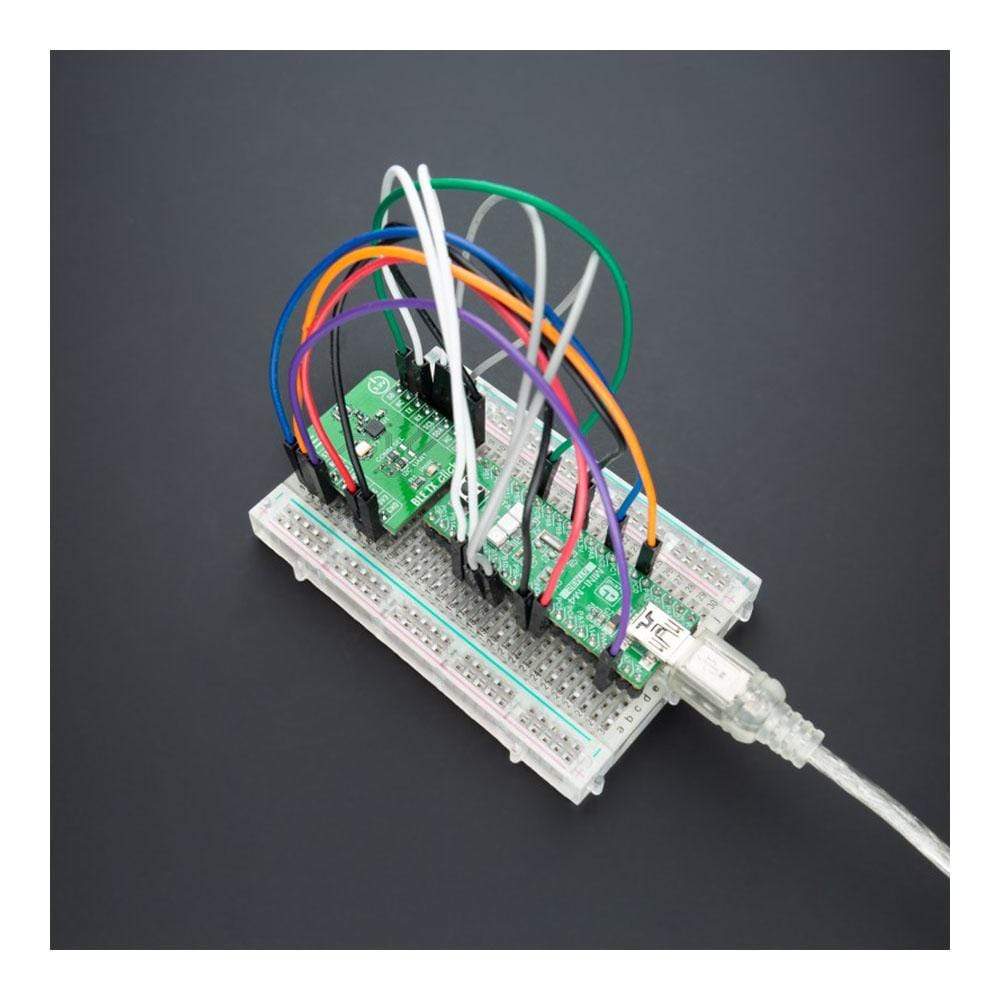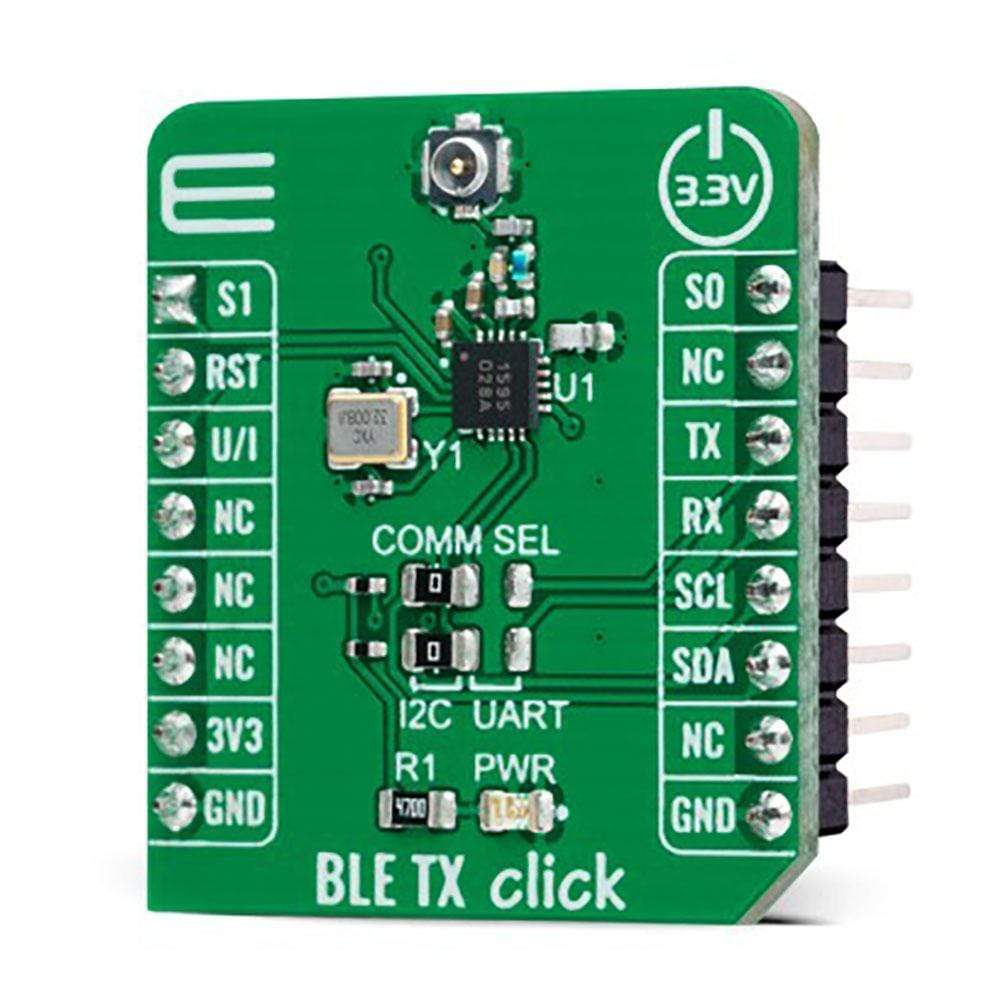
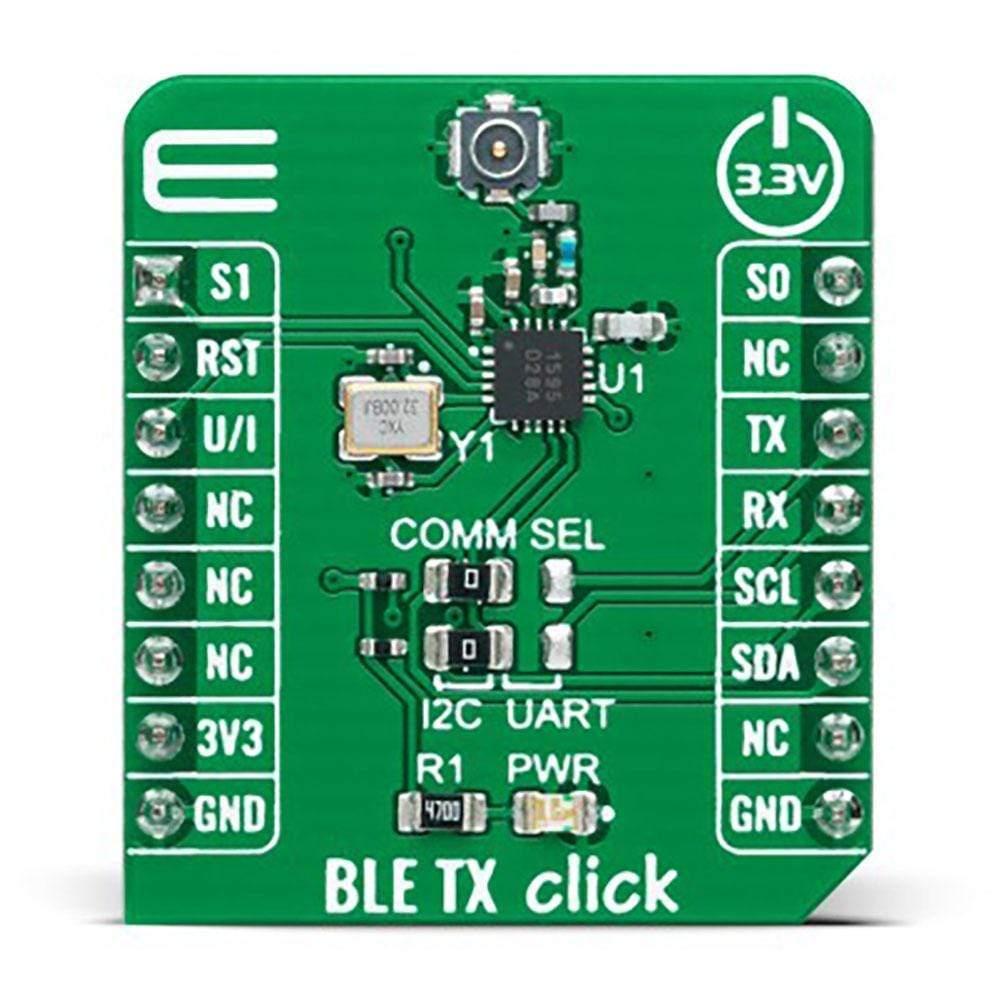
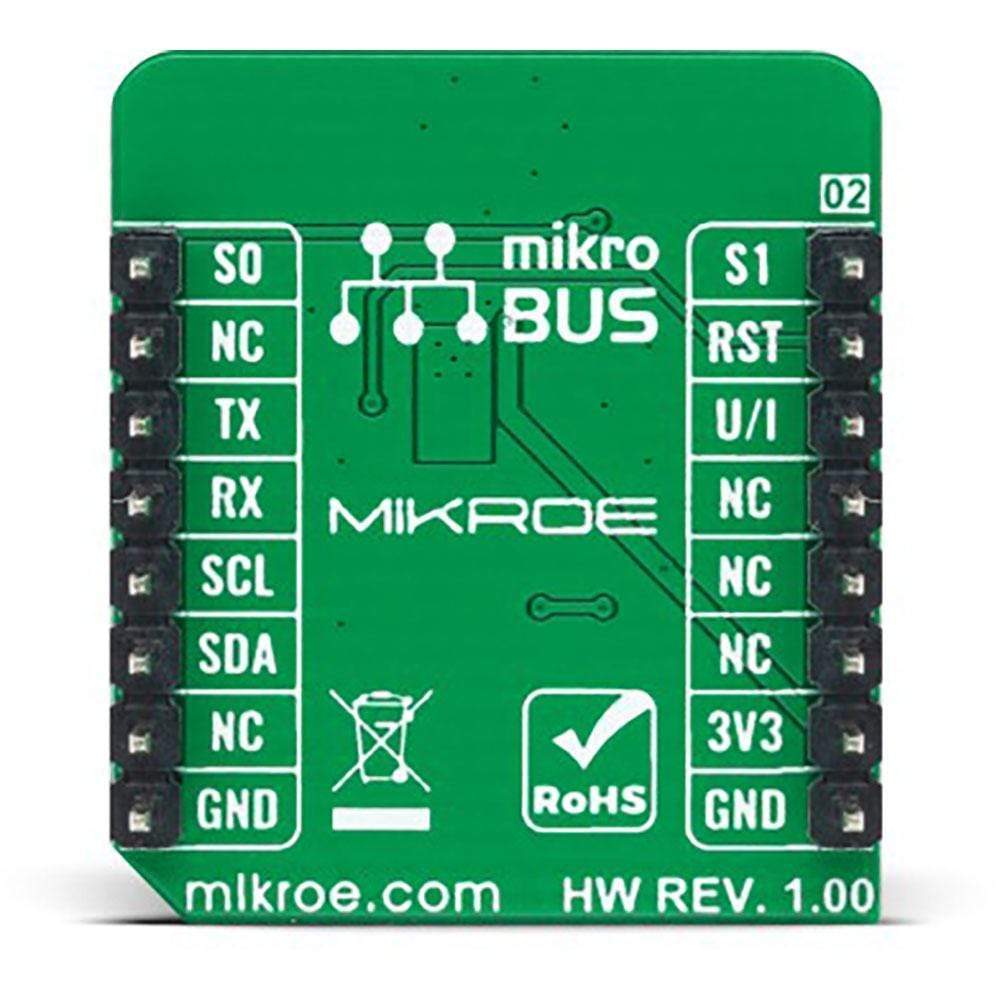
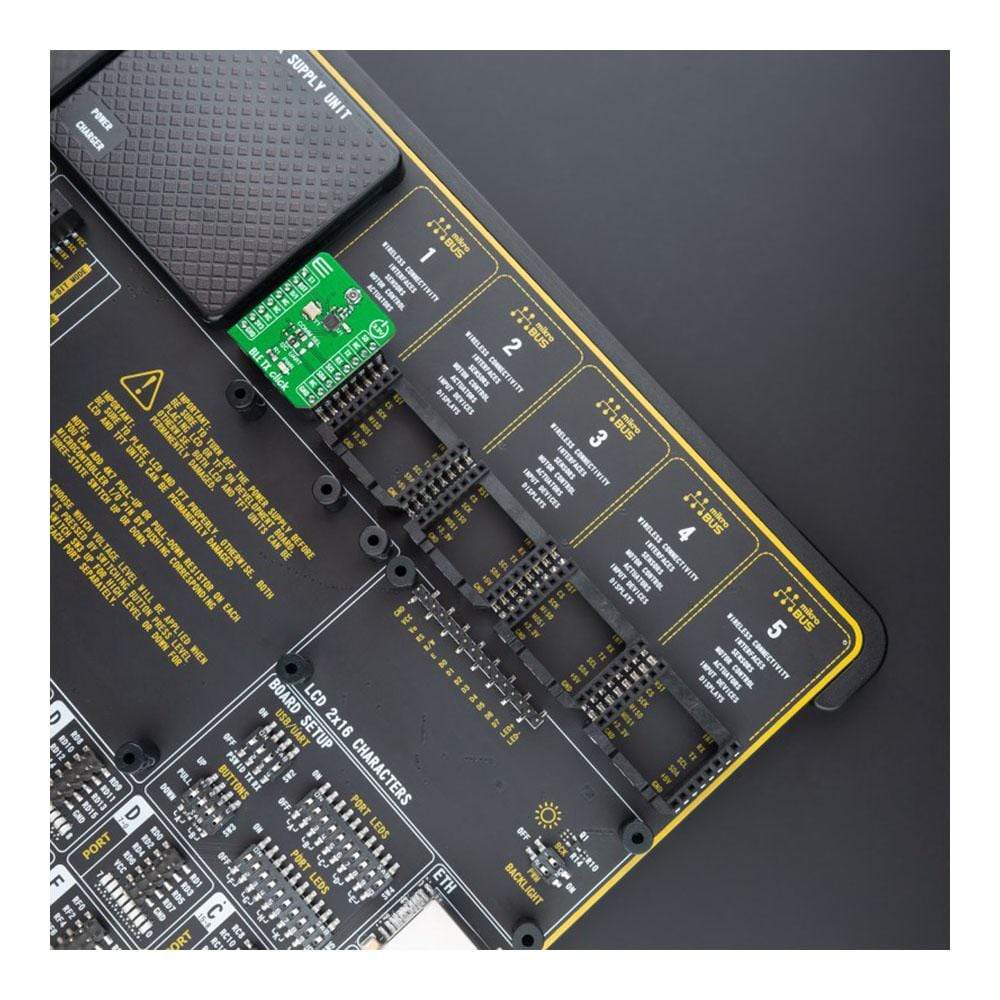
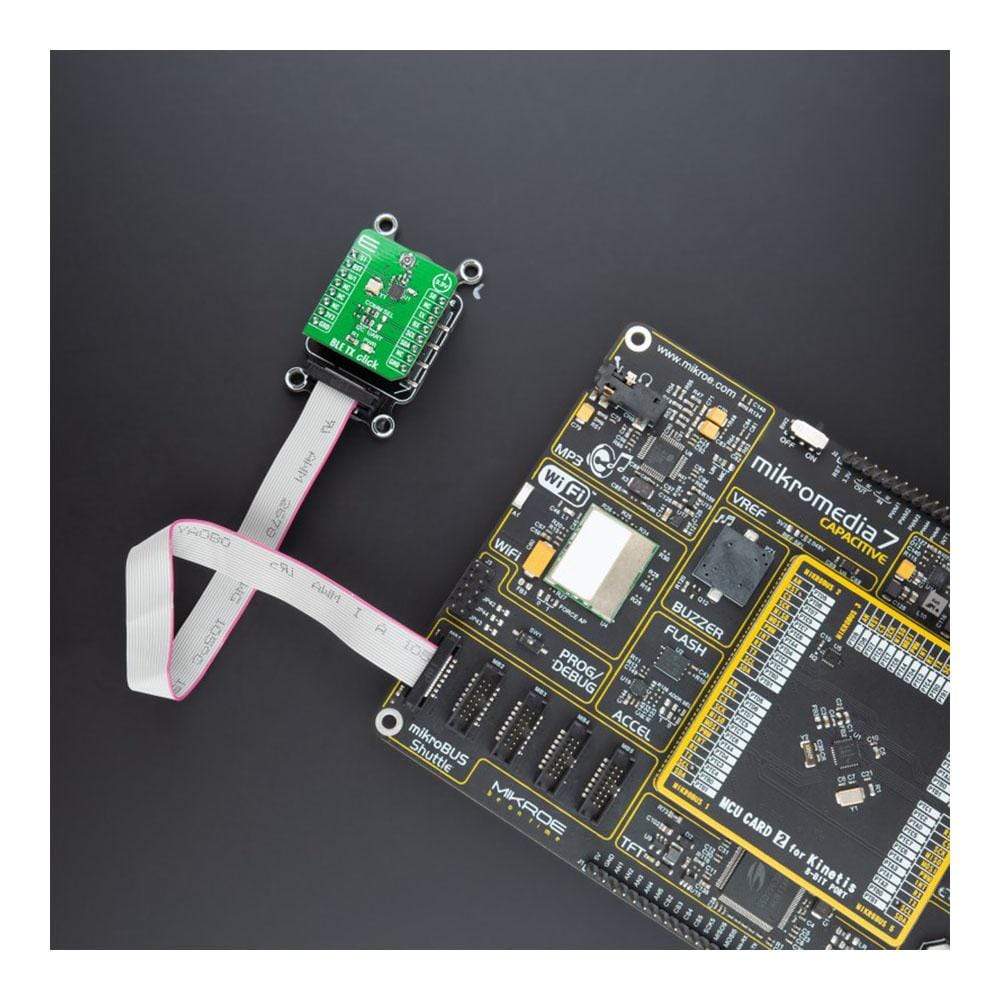
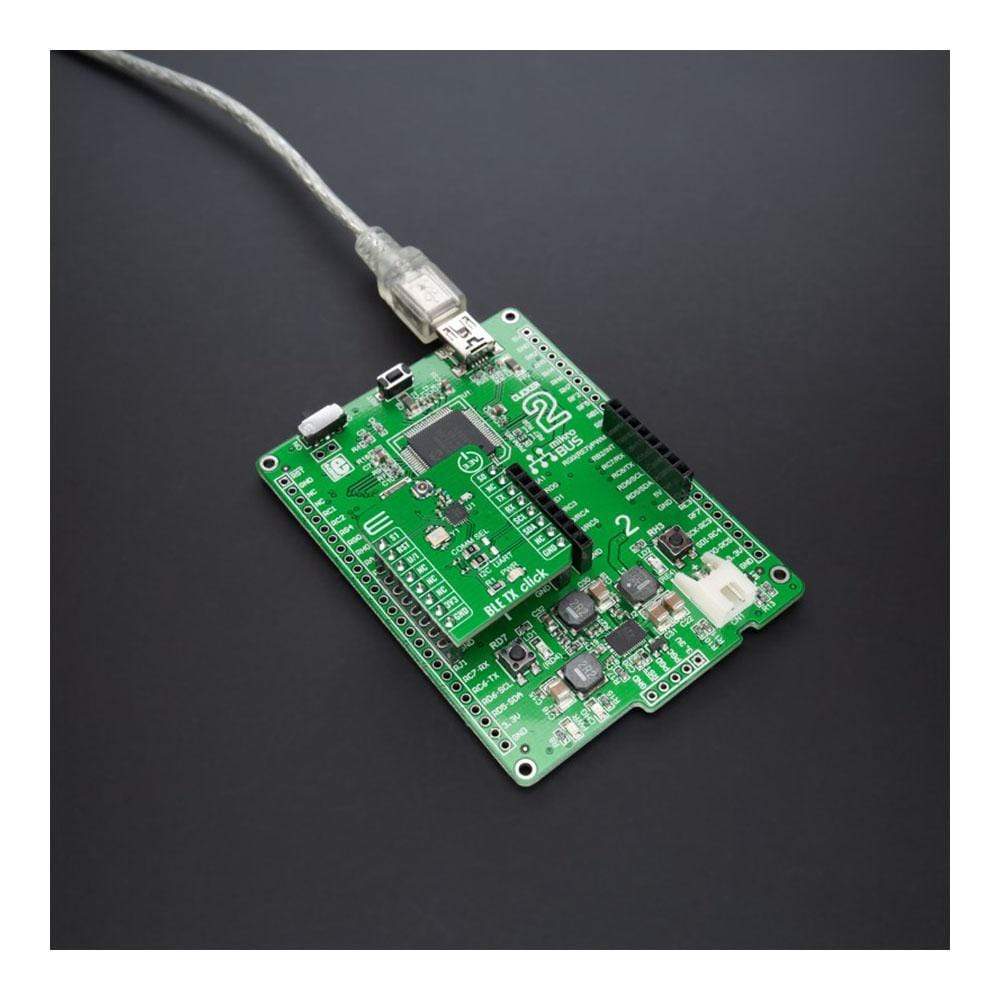
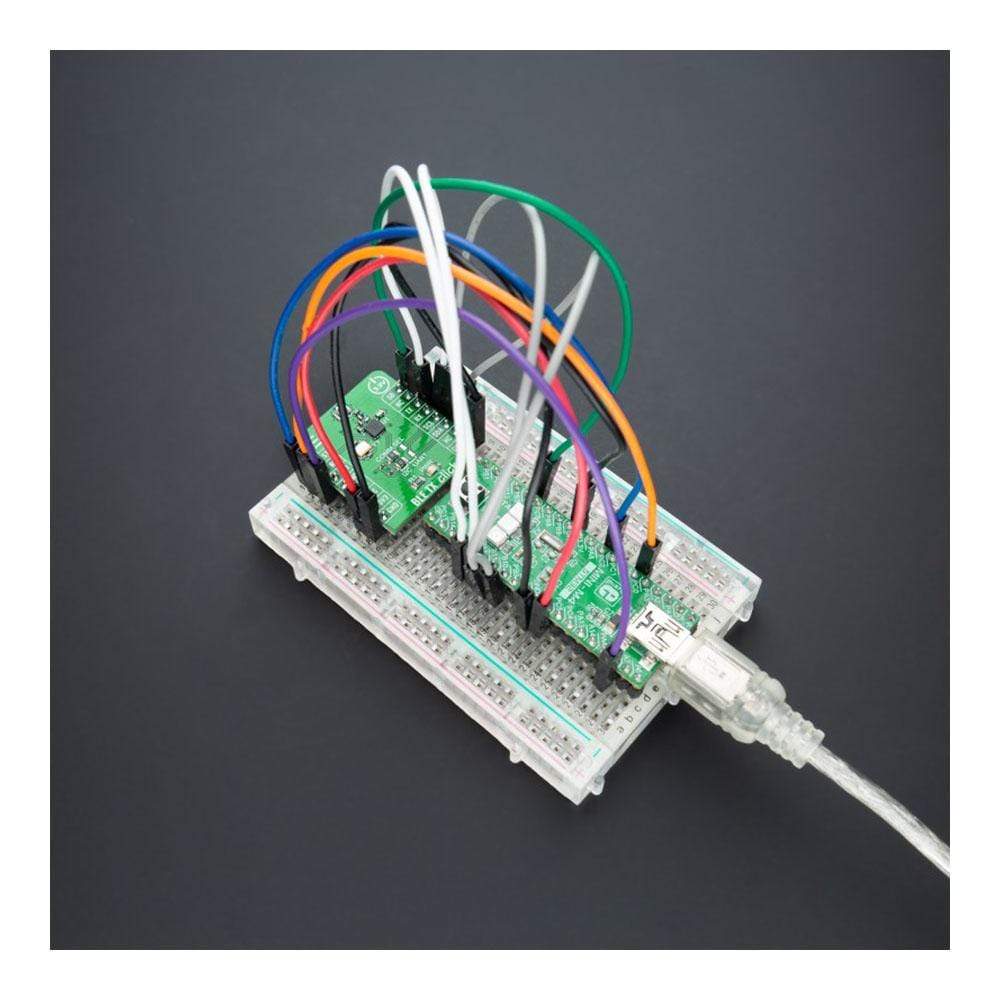
Overview
The BLE Tx Click Board™ is a compact add-on board that contains a low-energy Bluetooth transmitter. This board features the AK1595, a Bluetooth 5.2 transmitter with incorporated proprietary algorithm software from AKM Semiconductor. The AK1595 transmitter simplifies wireless connectivity to a system with no need to develop complicated, proprietary microcontroller code. Bluetooth Low Energy compliant advertising transmission can be achieved by simply configuring the transmission power, data, and transmission start-trigger via the UART or I2C interface.
The BLE Tx Click Board™ is suitable for general data transmission applications such as thermometers, blood pressure monitors, weight scales, toys, pet supplies, IoT sensor nodes, and more.
Downloads
Le BLE Tx Click Board™ est une carte complémentaire compacte qui contient un émetteur Bluetooth à faible consommation d'énergie. Cette carte comprend l'AK1595, un émetteur Bluetooth 5.2 avec logiciel d'algorithme propriétaire intégré d'AKM Semiconductor. L'émetteur AK1595 simplifie la connectivité sans fil à un système sans avoir à développer un code de microcontrôleur propriétaire compliqué. La transmission publicitaire conforme à la norme Bluetooth Low Energy peut être obtenue en configurant simplement la puissance de transmission, les données et le déclencheur de démarrage de la transmission via l'interface UART ou I2C.
La carte BLE Tx Click Board™ convient aux applications générales de transmission de données telles que les thermomètres, les tensiomètres, les balances, les jouets, les fournitures pour animaux de compagnie, les nœuds de capteurs IoT, etc.
| General Information | |
|---|---|
Part Number (SKU) |
MIKROE-4668
|
Manufacturer |
|
| Physical and Mechanical | |
Weight |
0.02 kg
|
| Other | |
Country of Origin |
|
HS Code Customs Tariff code
|
|
EAN |
8606027382741
|
Warranty |
|
Frequently Asked Questions
Have a Question?
Be the first to ask a question about this.

